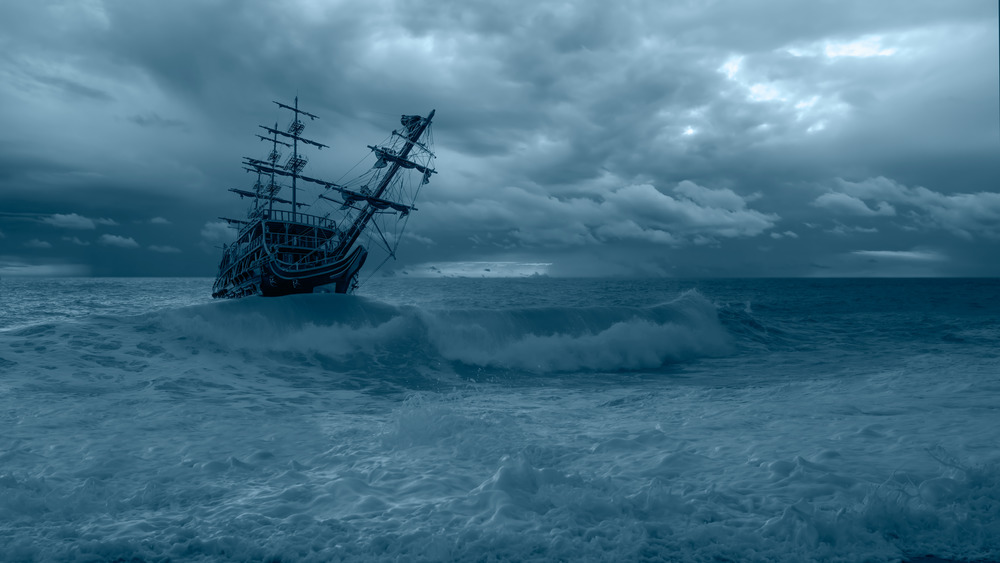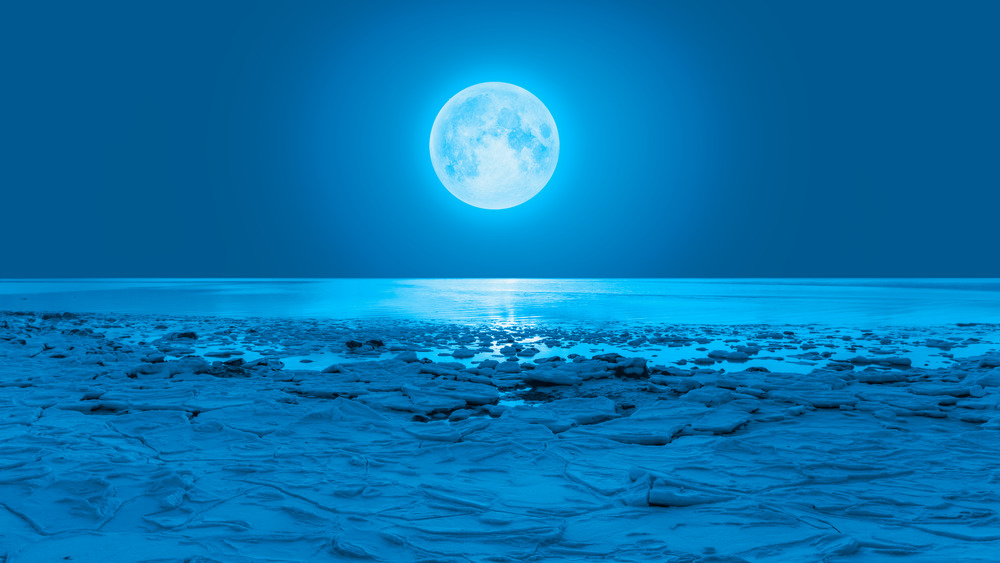The Truth About The Octavius Ship
Ghost Ship Octavius: a U.S.-based, theatrical, proggy metal band whose discography on Spotify... no wait, that's not right. And neither is "Octavius Ship" a boat belonging to Rome's first emperor, Augustus, who, as History tells us, was born Octavius. But Augustus was shipwrecked in 47 BCE, and the Octavius, a three-masted cargo schooner that departed London in 1761 for a one-year, round-trip journey to China and back, did become a wrecked ghost ship. So... there you go.
But really, the Octavius is one of history's greatest ghost ships, the kind of macabre artifact to inspire speculation, legends, questionable band name choices, and belief in the supernatural and/or the poor decisions of nautical navigators. As Boating Mag states, it's ranked up there with the Mary Celeste and the Carol Deering (ladies' names are a solid ghost ship portend), as well as other ships left derelict, and whose crews vanished or died under mysterious circumstances. And for the record? The Flying Dutchman — the boat of dead, damned spirits doomed to cruise the seas forever in search of port — is a myth derived from 17th-century maritime lore, as the Museum of Fictional Literary Artifacts says. Sorry.
The Octavius stands out from the pack of actual ghost ships, though, because it's quite easy to trace the narrative that left it frozen and full of corpses off the coast of Greenland, no matter how eerie and disturbing it all looked. And it starts with the discovery of the Octavius in 1775.
Unfortunate circumstances and avoidable deaths
The Octavius set off in 1761 with a "full crew, the skipper, and his wife and son." They apparently made it to their destination in "China" (no specific port) without incident, dropped off their goods, and headed back to England. So far, so good.
However, as Vintage News explains, the seas were unseasonably hot, and the captain decided to take a detour through colder waters on the way home, namely: the Northwest Passage, the Arctic pathway north of Canada connecting the Pacific and Atlantic Oceans. The captain must have been feeling daring, because this highly dangerous route hadn't yet been charted. How do we know this? Because of his log.
Cut to 14 years later when a whaling ship, the Herald, spotted the Octavius, tattered and weatherworn, sails shredded, floating aimlessly near Greenland. After determining that it was indeed the Octavius, they set out to board it. Below deck, they found the entire crew, 28 men, frozen to death. The captain was still at his chair in his quarters, pen in hand, dead. Near him was his wife wrapped in a blanket, huddled around their son, both dead. The Herald crew freaked out, grabbed the captain's log, and abandoned ship.
The Octavius' last logged position? Nearly 250 miles north of modern-day Barrow, Alaska, as Sea Mariner says, the northmost point in the U.S., on the opposite site of the continent from Greenland. Somehow the Octavius had actually made the unchartable journey, but at an irrecoverable cost.

